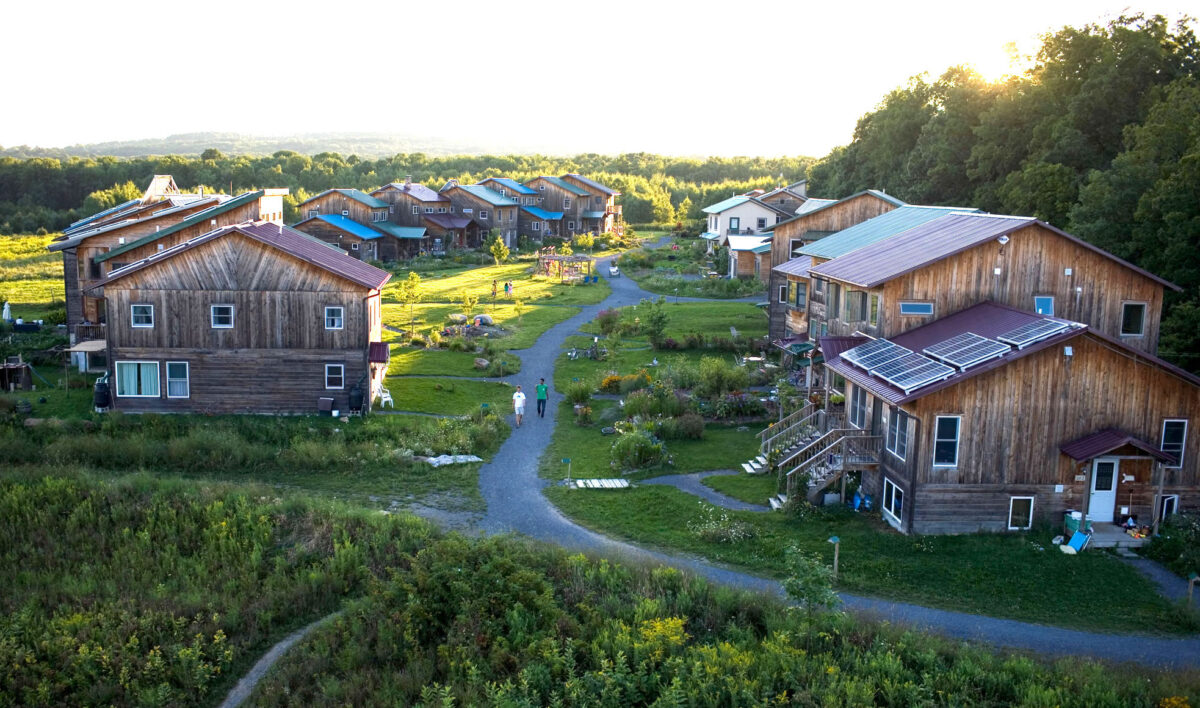As the list of global environmental concerns continues to grow and many people make changes to their lifestyles, some people have taken it a step further by living in sustainable communities called ecovillages. Ecovillages are live-in communities meticulously designed to uphold the social, ecological, economical, and cultural dimensions of sustainability. There are several kinds of ecovillages, but they are generally separated into two categories: traditional and intentional ecovillages. Traditional ecovillages are previously existing rural communities that decided to integrate sustainability into their traditional lifestyles. Conversely, intentional ecovillages are newly established communities created by people who wanted to start a new, sustainable lifestyle journey. According to the Global Ecovillage Network, there are over 150 ecovillages in the United States alone, and this figure will continue to grow as sustainable living communities become more prominent all over the world.
To achieve their goals, ecovillage members are expected to adhere to strict guidelines that are set by the community. The way communities are planned varies from village to village, but in general they all seek to have lifestyles that have a reduced impact on the environment. Many ecovillages plant community gardens for food, implement renewable energy systems to power their homes, and even construct their homes out of recycled materials. Depending on the ecovillage, they might even create schools designed to teach students about sustainability and the environment.
The Ithaca Ecovillage is an intentional ecovillage established in 1990, and is located in Upstate New York near the Finger Lakes region. There are about 220 residents living in 100 homes that occupy three connected neighborhoods—FROG, SONG, and TREE—which were built at different times. All of the homes in this ecovillage are powered by solar energy, and each neighborhood has a community garden that provides food for its residents. Residents pick crops from community gardens in each neighborhood and cook in communal kitchens where they gather for dinner. In addition, neighborhoods have shared facilities, including recreational playrooms, laundry rooms, and even libraries. Considering its close proximity to higher education institutions such as Cornell and Ithaca College, Ithaca Ecovillage residents have also delved into the world of education by teaching courses at both these institutions. Sponsored by Cornell University, their newest project is the “Thrive Ithaca EcoVillage Education Center,” which seeks to teach community members and visitors about a multitude of topics, including community sustainability practices, regenerative agriculture, and ecovillage design, among others. Ithaca Ecovillage has had over 30 years to organize and fund elaborate projects, establishing itself as one of the largest and most prosperous ecovillages in the U.S.
In contrast, Kailash Ecovillage has been in operation for 13 years, and has not developed large scale projects like Ithaca Ecovillage. The Kailash Ecovillage is also an intentional ecovillage. First established in 2007 on a two-acre farm about four miles from downtown Portland, Oregon, Kailash has about 60 residents living in 30 one-bedroom apartments and two two-bedroom apartments. The apartment buildings are solar powered and have water catchment systems that reduce the need for external water sources. In addition, all of the residents share a community garden and a communal kitchen that is strictly vegan. Kailash also has a vehicle share program where residents carpool and share their cars to cut down on carbon emissions. Among other projects, the community adheres to strict recycling practices, and even neighbors outside of the ecovillage participate in their recycling program. Unlike the larger Ithaca Ecovillage, the Kailash Ecovillage is a smaller sustainable living community limited by fewer resources and a shorter time scale.
Ithaca Ecovillage and Kailash Ecovillage are two environmentally-conscious living communities that have many similarities, including communal gardens and kitchens, and renewable energy that powers their communities. Although they are similar in their missions, Ithaca Ecovillage is considerably larger and more established than Kailash Ecovillage. Ithaca Ecovillage has more residents and large-scale projects; Kailash is still a fairly new community that hasn’t had enough time to develop its projects the way Ithaca has. Ithaca Ecovillage is an exemplary model of a sustainable living community that has had years of strategic planning, while Kailash is an example of an ecovillage that is still in its developing stages. As more people become environmentally conscious, communities like these provide one interesting model for a possible sustainable future.
Sources:
Cooney, Scott. (2017, January 3). Profile of Kailash Ecovillage, an Urban Intentional Community in Portland Oregon.
Ecovillage Ithaca (2020). Neighborhoods. https://ecovillageithaca.org/live/neighborhoods/
Global Ecovillage Network (2020). What is an ecovillage? https://ecovillage.org/projects/what-is-an-ecovillage
Kailash Ecovillage (2020). Recycling, Reusing, and Reducing. https://www.kailashecovillage.org/recycling
Lowe, Andy. (2016, November 9). What are Ecovillages?
Thrive Ithaca EcoVillage Education Center (2020). About Us. https://www.thriveithaca.org/about
Wingell, Bill. (2008). Ecovillage at Ithaca: A Community Bounded by Ideals.

